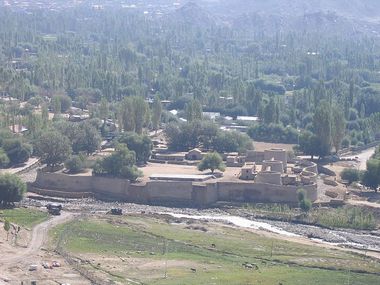April 17, 2012
Applying Evolving Technologies Inspired by Nature to Human Society
Keywords: Newsletter
JFS Newsletter No.114(March 2012)
"JFS's 'Get Inspired by Nature' Project" (No. 6)
Introduction
Since August 2011, we have been releasing a series of articles titled "JFS's 'Get Inspired by Nature' Project," which includes an interview with an expert, an episode related to the development of technologies inspired by nature, and many interesting cases of technologies by category. (English cases lists are coming soon.)
http://www.japanfs.org/en/pages/031298.html
In this issue of the JFS newsletter, we feature an interview with Kyoji Okamoto, president of Bremen Consulting Co., who specializes in corporate social responsibility (CSR) and biodiversity, from the viewpoint that we human beings might be able to learn things from nature not only regarding technologies for manufacturing but also about social systems.
In recent years, biomimicry and approaches inspired by nature have been attracting more and more attention with regard to manufacturing and engineering. These approaches have developed through research and taking ideas from nature -- such as from ecosystems, the physical features of living organisms, their behavior and materials -- and then applying such examples of nature's wisdom to technologies to solve engineering constraints and technical problems.
Meanwhile, no matter how much manufacturers become able to create products with lower environmental burdens, if they keep producing things that still end up in the garbage, then they will accumulate outside of the material cycles we see in nature. In modern times, environmental issues are complexly intertwined with social problems such as international and inter-regional equity; environmental, economic, and social burdens for future generations; and ecological degradation due to lifestyles based on large-scale production and consumption. Current social systems, mostly created in pursuit of efficiency and rationality, are starting to be criticized for having some problems.
So how does nature deal with the problems that human society and the global environment are facing? Okamoto is also a professor at the graduate schools of Tohoku University and Tokyo Metropolitan University, and has been studying and providing recommendations focused on the utilization of nature's wisdom -- such as the structure of animals and plants, their ecosystems and social behavior, as well as fermentation systems -- in our social systems.
The Insect Brain and Social Systems in Terms of Human Community
Let's look at some examples. It is said that an insect brain weighs a millionth that of a human brain. Nevertheless, how can insects move so quickly, seek food by themselves, and ensure continuation of the species? The secret lies in the structure and alignment of the insect brain. While the human brain is concentrated in the head, 50 percent of the insect brain is located in its head, and the rest is dispersed throughout its body in the form of a nerve cord, which enables the insect to think and act quickly.
In a sense, the centralized human brain and the dispersed insect brain are like centralized and decentralized administrative organizations in human society. For example, for crisis management in the event of a disaster, there have been some reports that governments could not promptly respond to disasters under a centralized administration.
The crisis response when Hurricane Katrina hit the southeast United States in 2005 is one such case. Despite the precise forecast of hurricane strength and landfall point, the federal and state governments were slow to deal with the disaster due to failure of close cooperation and lack of rapid decision-making. On the other hand, amateur radio operators living along the coast of the Gulf of Mexico promptly began to communicate with each other to urge people to get ready for the hurricane. They were therefore able to prepare private electricity generators and other equipment to ensure there was a communication network that could continue to transmit information on the sites where help was needed.
A similar situation was also seen in the Great East Japan Earthquake disaster in 2011. Lack of communication and slow government decision- making caused delays in dealing with transportation and distribution of aid supplies. Amid such confusion, it was the local people, NGOs, and volunteers who made quick decisions and provided support to the stricken areas.
In both these examples, it was a decentralized network of people that were fast in making decisions and taking action, just like the insect brain using the nerve cord. Learning from these experiences, Prof. Okamoto proposes the idea of creating a "disaster prevention triangle network," in which a city would form a partnership with two neighboring cities locally to be able to support any damaged municipality in the network. He suggests extending these partnership networks nationwide for being prepared for crises.
Spider Webs and Social Systems
Ordinary spiders also provide us with an important viewpoint useful for human society.
Margaret Wheatley, a renowned educator in the U.S., says that human society can learn from the structure of a spider web; the entire web jiggles when there is slight pressure in one area and the web softly traps the insect prey. Prof. Okamoto points out that such a system was once seen in Japan, where families and village residents supported each other.
While on the other hand, with the customs of corporate society that have rapidly grown over the last several decades, people are considered simply as human resources that are easily replaced by others, just like replacing bricks with those of the same size, which can cause major mental and physical stress for the people who work there. The structure of the spider web provides us with a concept we can use to rethink a haphazard personnel system, and create a structure supported by the entire organization.
Theory of Social System "Fermentation"
Prof. Okamoto proposed the "social system fermentation" theory in 2008. When looking at how yeast fungus ferments and grows rapidly, the yeast itself grows with no other fungi or organs to indirectly support the growth to be seen. In the structure of companies, however, supporting functions -- including general affairs, management, audit, and corporate social responsibility (CSR) to support the structure -- are required as a company grows larger, which will then continue to become stratified. Furthermore, when the company develops globally and expands its business to the world, conflicts are likely to be generated elsewhere.
Prof. Okamoto says a good example of the social fermentation theory in practice, which is small in business scale but expanding widely, is Myfarm Co., a Japanese farming consultant headquartered in Kyoto. Myfarm launched an agricultural business with a corporate policy of "creating a society capable of self-production and self-consumption." In this business, the company undertakes abandoned farmland across the country from individual landowners upon request, and then restores the lands as rental farms where people can experience farming. During the five years after the company was established, the number of rental farms has been expanding from the Kansai region in western Japan to the Tokai and Kanto regions in the east. Another example of the fermentation theory in action is micro-finance, one of the emerging financial services that offers micro-credit loans to poor and low-income clients.
Traditional Lifestyles and Wisdom Applied towards New Social Systems
These desirable examples of human groups and society inspired by natural systems remind us of similarities with traditional social systems. As described in the book "Ancient Futures: Learning from Ladakh," by Swedish linguist Helena Norberg-Hodge, the traditional lifestyle in the Tibetan region of Ladakh has evoked worldwide empathy over the years.
Exploitive development enforced by giant amounts of capital during the 20th century brought about deterioration in the global environment and social order. As the problems associated with such development are becoming more apparent, localization movements are starting to be seen as a counter to globalization. Local communities used to be scattered geographically; now, however, advanced computer and high-speed telecommunications technology allows them to stay connected with each other, which can contribute to the unprecedented development of local communities.
Prof. Okamoto remarks on the potential in future social systems,
"In the twenty-first century, it will be possible to establish social systems inspired by the implications of the fermentation theory, ideas from spider webs, and the dispersed nerve cords of insects, which can prevent excessive energy use and environmental deterioration. Creation of nature-inspired social systems can fundamentally alter the existing concept of societal development, which is only a little over 100 years old. With small woven-together groups, developed like yeast fungus, with local culture and geographical features, in a network like a spider web, twenty-first century society could have the strength in flexibility and resilience needed to survive in a diverse environment."
Conclusion
Nature systems, such as the structure and behavior of living creatures, have given us insights for individual solutions for certain challenges.
Current social systems, including social welfare and financial systems, have a history of at most some decades or centuries. In contrast, the most sophisticated and simple systems of nature have survived to the present among numerous systems developed over billions of years.
When thinking over problems between countries and regions, between current and future generations, and between humanity and ecosystems, how much can we learn widely from the systems and interactions embedded in ecosystems? Once we seriously consider the lessons from nature systems that can be applied to human society, we will recognize a greater significance in conserving natural ecosystems.
The applied study of nature-inspired social systems is in an emerging phase and has a long way to go, so we would appreciate it if you could share any of your ideas and informative cases of unique organizations, traditional local lifestyles, and philosophies that reflect those of natural systems.
Written by Noriko Sakamoto
Related
"JFS Newsletter"
- 'Good Companies in Japan' (Article No.4): 'Eightfold Satisfaction' Management for Everyone's Happiness
- "Nai-Mono-Wa-Nai": Ama Town's Concept of Sufficiency and Message to the World
- 'Yumekaze' Wind Turbine Project Connects Metro Consumers and Regional Producers: Seikatsu Club Consumers' Co-operative
- Shaping Japan's Energy toward 2050 Participating in the Round Table for Studying Energy Situations
- 'Good Companies in Japan' (Article No.3): Seeking Ways to Develop Societal Contribution along with Core Businesses




